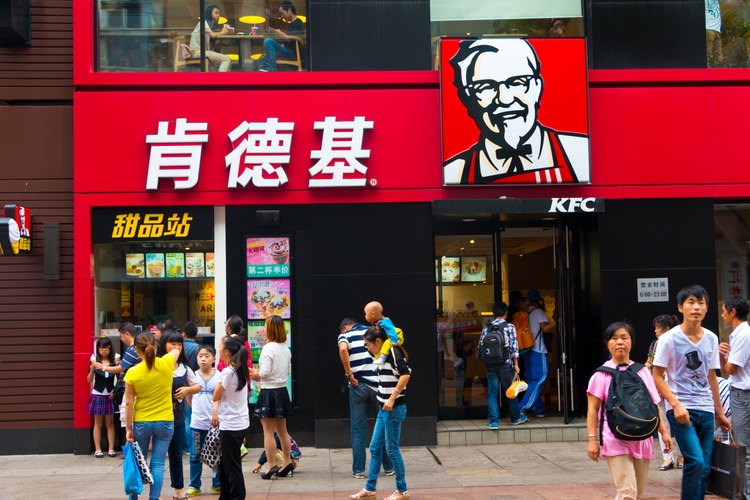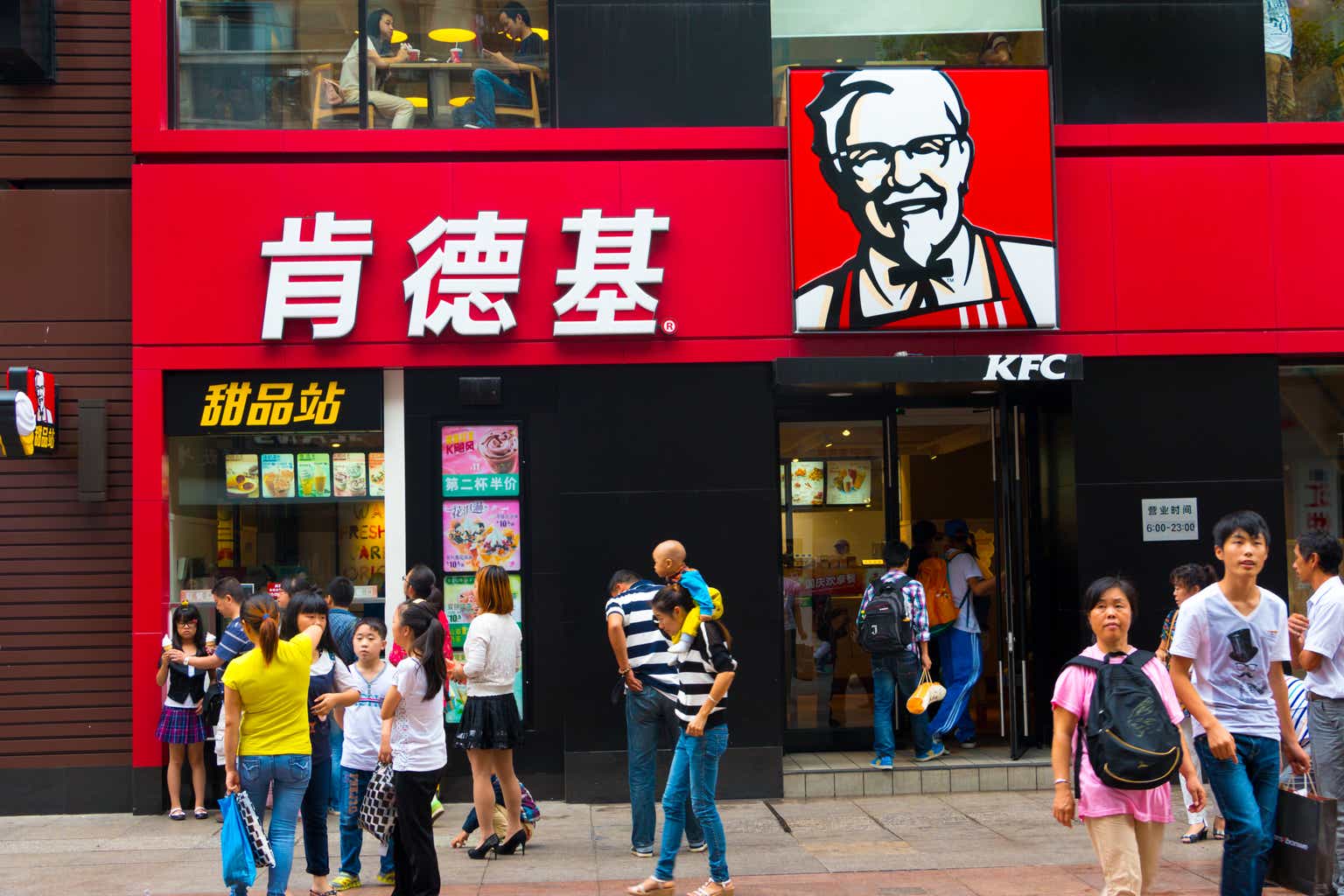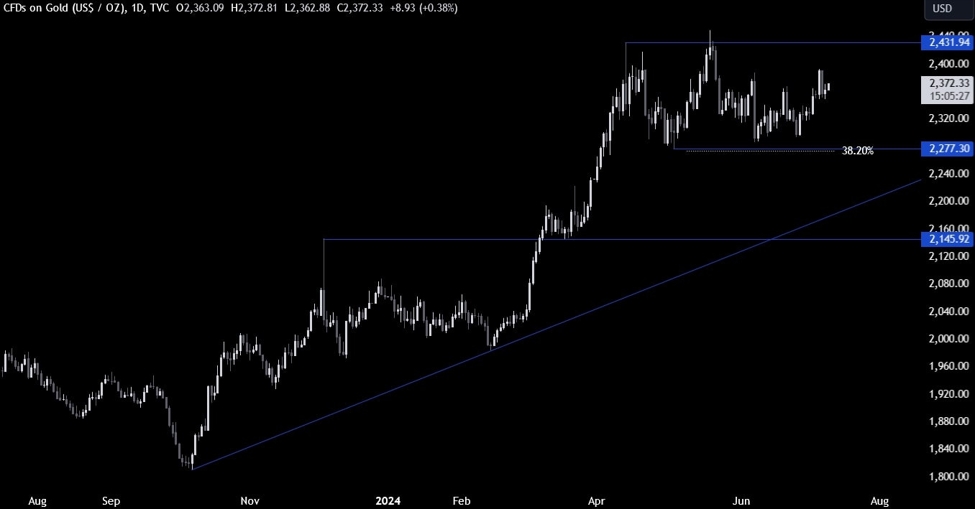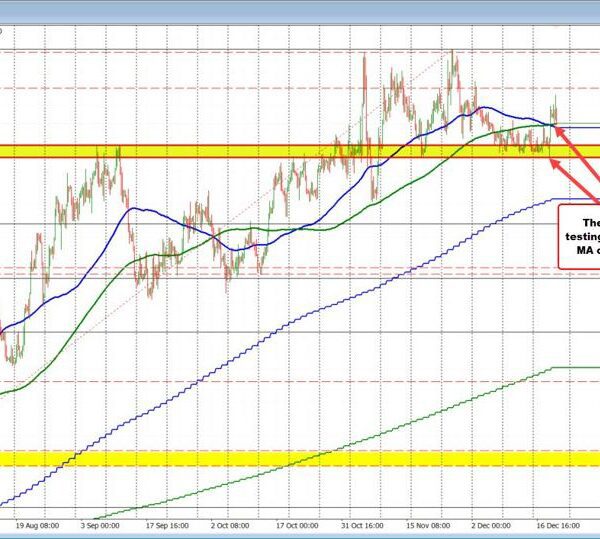Editor’s note: Seeking Alpha is proud to welcome Three Mile Research as a new contributing analyst. You can become one too! Share your best investment idea by submitting your article for review to our editors. Get published, earn money, and unlock exclusive SA Premium access. Click here to find out more »
loveguli
Investment Thesis
We assign Yum China (NYSE:YUMC) a buy rating. The recent stock price decline presents an attractive entry point for this industry leader. Despite current challenges, Yum China’s strong market position and strategic growth initiatives enhance its long-term prospects, making it a compelling investment opportunity.
Yum China faces significant challenges from softening consumer demand and macroeconomic headwinds. These factors have affected the company’s same-store sales and profit margin, which declined 11% and 1.6%, respectively, in Q1 2024 compared to Q1 2023. These issues resulted in a 5% year-over-year decline in operating profit, which translates to a 10% decline in dollar terms when accounting for unfavorable currency exchange rates. [Pg. 22]
If these trends persist, Yum China may struggle to sustain its high profitability and return value to shareholders at current levels. However, as the largest restaurant company in China with strong brand recognition, it has a significant economic moat that equips it to overcome current challenges and continue its market expansion. As Warren Buffet remarked at the 2000 Berkshire Hathaway annual meeting, quoted in Charlie Munger’s book Poor Charlie’s Almanack: “We tell our managers we want the moat widened every year. That doesn’t necessarily mean the profit will be more this year than it was last year because it won’t sometimes. However, if the moat is widened every year, the business will do very well.”
Part I: Future Growth Potential in China and Customer Base Expansion Capabilities
According to the International Monetary Fund, China’s GDP growth is projected to decline from 5.3% in 2023 to 5.0% in 2024 and further down to 3.3% in 2029. Despite this projected slowdown, which has led to a widespread negative market sentiment towards China, the country’s growth rate is still substantial, and it remains higher than many emerging markets. Notably, contrary to common market perceptions, GDP growth rate does not have a strong correlation with stock performance, as expected growth rates are often already reflected into stock prices. Moreover, when countries are out of favor, statistically and historically, it’s a better opportunity to buy the entire index of the country, offering particular opportunities for outperformance.
We believe that Yum China fits well into this category, being strategically aligned to leverage China’s economic potential. The company currently serves over 460 million individuals and has plans to increase its reach to 700 million by 2026. [Pg. 1] This expansion plan, which targets the establishment of 20,000 stores nationwide, is ambitious yet feasible. Yum China’s proven ability to scale operations, coupled with its deep understanding of local markets, positions it well to achieve these targets and expand its exposure to one of the world’s largest and increasingly affluent populations.
Part II: Favorable Consumer Mix Change in Lower-Tier Cities Across the Country
Historically, lower-tier cities in China have been characterized by lower consumption levels, but recent trends indicate substantial upgrades in consumer behavior, driven by rising affluence and an expanding middle class. According to a recent Boston Consulting Group report, by 2030 the Chinese middle-class and affluent consumer population is expected to grow by 80 million, with over 70% of these new consumers residing in third-tier cities and below. From a macroeconomic perspective, this demographic shift is expected to broaden the restaurant industry’s market base and drive long-term resilience in the sector.
Yum China is well positioned to capitalize on this trend, considering that over half of new stores opened in recent years are located in lower-tier cities, where the company benefits from lower labor and rent costs while maintaining a ticket average comparable to higher-tier cities. [Pg. 1] The development of flexible store formats tailored to these markets lowers upfront investment costs and enhances economic efficiency. For instance, these new formats often incorporate digital kiosks and mobile ordering systems, which have been shown to increase average transaction values by 15% and lower operating costs by 20%. This multifaceted strategy of flexible store formats and efficient cost management will enable Yum China to effectively navigate changing market dynamics and take advantage of the evolving market conditions.
Part III: Accelerating Shareholder Returns Through Share Repurchases and Cash Dividends
Despite recent challenges, Yum China has been able to sustain its dividends and escalate its share repurchases, leveraging market downturns to enhance these initiatives. In 2023, the company allocated a record $833 million for dividends and share repurchases. This trend continued into 2024, with $745 million allocated in the first quarter alone, setting a new record for its highest quarterly return in history. During this period, Yum China repurchased 16.6 million shares of common stock for $681 million, representing over 4% of their shares outstanding. [Pg. 6]
Additionally, management has decided to further expand the share repurchase program, targeting an allocation of $3 billion from 2024 to 2026. [Pg. 6] Given the company’s current trajectory, it is highly credible that this program will be implemented in full, which could significantly reduce the number of shares outstanding at current prices. With roughly 400 million shares outstanding, and assuming an average repurchase price of $34 per share (slightly above the current price), a $2.3 billion investment—considering the remaining funds in the share repurchase program after last quarter’s transactions—would result in the repurchase of approximately 68 million shares. This would increase investors’ ownership in the company by over 17%. Moreover, even in a bearish scenario of constant earnings, this share reduction could lead to a substantial increase in earnings per share through the concept of accretion.
Fundamentals and Valuation
Over the last five years (2019 – 2023) revenue has gone from $8,776 million to $10,978 million (a CAGR of 5.76%), and net profit has gone from $713 million to $827 million (a CAGR of 3.78%). While this growth may appear modest, it surpasses that of many competitors in the industry, particularly considering the impact of the pandemic on the restaurant sector in China. Notably, 2023 was an exceptional year for the company, with revenue and net profit growth of 14.72% and 87.10%, respectively (accounting for unfavorable currency exchange rates). [Pg. 76]
The company also has solid free cash flow generating capabilities, with net cash inflow from operating activities in the first quarter of 2024 amounting to $442 million. [Pg. 9] And it has a reasonable level of liquidity with a current ratio of 1.4. In essence, we consider the company to have solid growth and a healthy balance sheet. Despite this, the company trades at an EV/EBITDA multiple of 7.79x and a P/E ratio of 15.50x. By comparison, the industry trades at an average EV/EBITDA multiple of 11.57x and a P/E ratio of 22.68x. This suggests a potential upside of 46%-49% if it were to trade in line with its peers.
When comparing Yum China’s EV/EBITDA multiple of 7.79x and P/E ratio of 15.50x to its parent company Yum Brands in the US, which trades at an EV/EBITDA multiple of 19.22x and a P/E ratio of 23.49x, the disparity becomes evident. This valuation gap is primarily due to higher perceived risks in emerging markets and macroeconomic and operational challenges unique to the Chinese market. However, Yum China’s inherent similarities with its parent company, combined with its substantial growth potential, support the case for a valuation re-rating. As the company continues to execute its growth strategy and the Chinese market stabilizes, Yum China’s valuation could align more closely with its US counterpart and the industry average.
Downside Risks
- Prolonged macroeconomic headwinds and softening consumer demand could continue to pressure the company’s profitability, affecting same-store sales and profit margins.
- The expansion plan into lower-tier cities, while promising, involves significant execution risks, including logistical complexities and increased competition.
- Given that Yum China operates in China but reports financials in USD, unfavorable currency exchange rates could impact reported earnings and profitability.
- Negative market sentiment and perceived risks associated with investing in China could limit capital inflows and affect the company’s stock performance.
Conclusion
Despite the negative effects of diminishing consumer demand and tough macroeconomic conditions on Yum China’s performance, the market appears to be overestimating the long-term impacts that these issues will have on its growth prospects. The company’s robust competitive advantage has enabled it to successfully navigate downturns in the past. Coupled with its strong operational capabilities, the company is well-positioned to continue expanding its market share by both amplifying its operations and penetrating into lower-tier cities across China. Moreover, management is well aligned with investor interests, taking advantage of price fluctuations to further increase shareholder returns, which is favorable even amid the current stock price decline. Overall, we consider the company an industry leader being valued as if it were a laggard.















